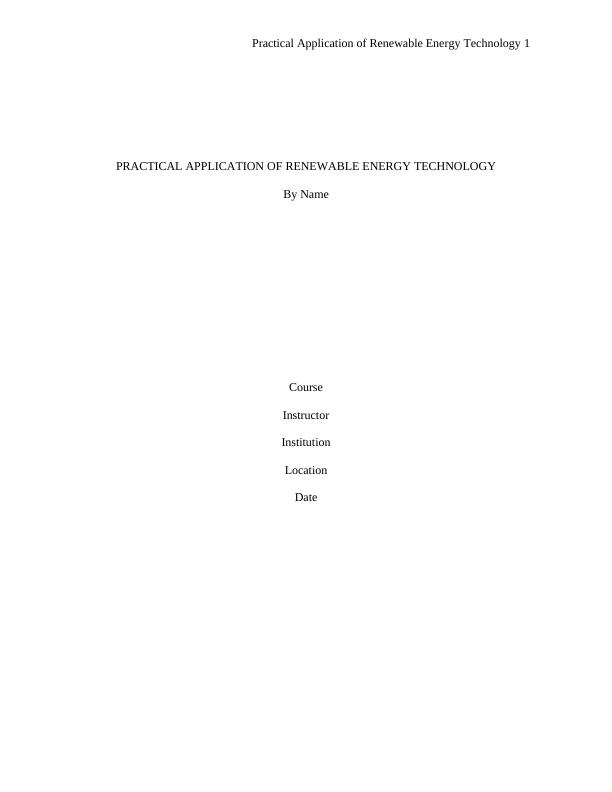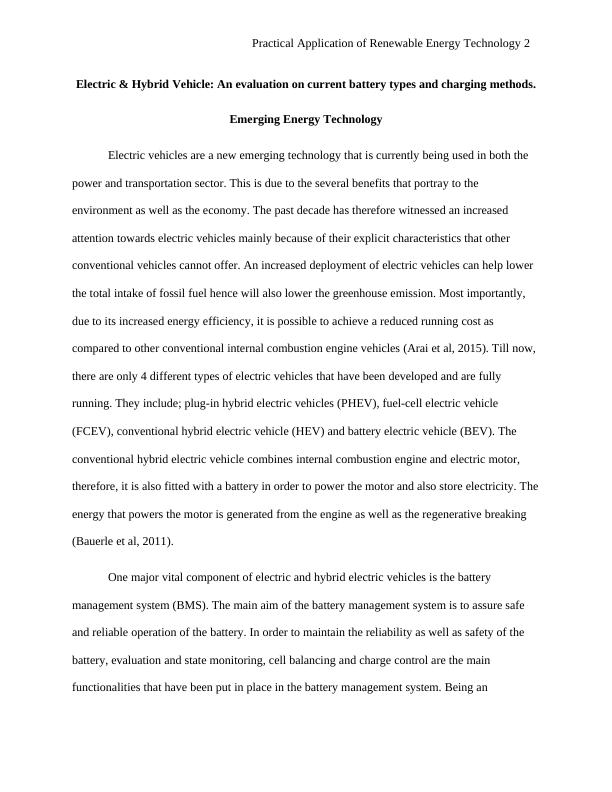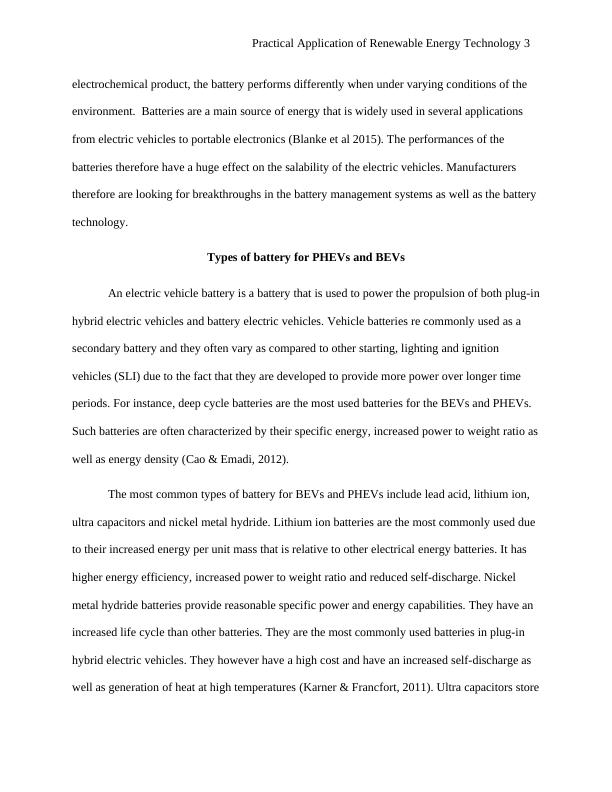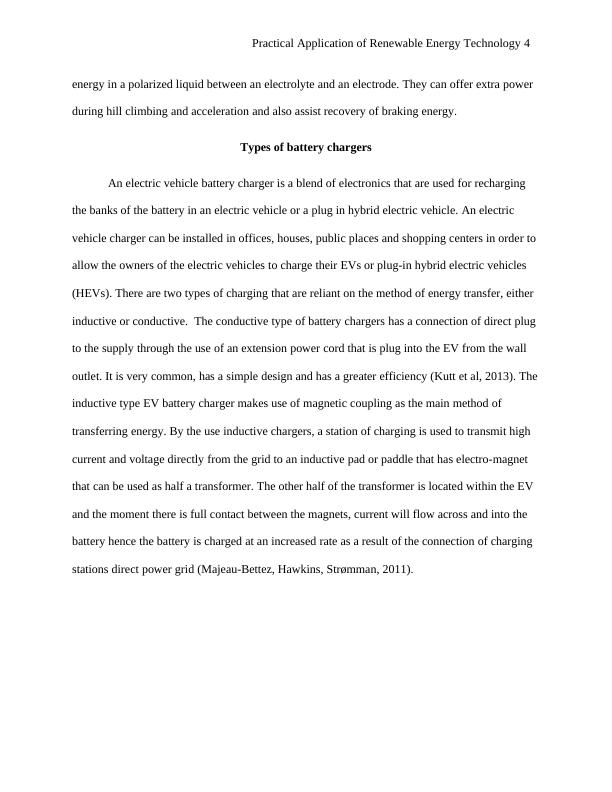Practical Application of Renewable Energy Technology
15 Pages3214 Words58 Views
Added on 2023-02-01
About This Document
This article discusses the practical application of renewable energy technology in electric and hybrid vehicles. It explores different battery types and charging methods, highlighting their advantages and disadvantages. The article also covers the importance of battery management systems and the different types of charging stations.
Practical Application of Renewable Energy Technology
Added on 2023-02-01
ShareRelated Documents
End of preview
Want to access all the pages? Upload your documents or become a member.
Advance Development of PHEVs by Electromagnetic Brakes 2
|9
|2872
|172
Energy Storage System Design docx.
|3
|963
|26
Battery Powered Electric Vehicles: A Solution to Carbon Emission Problems?
|3
|814
|153
The Future of Electric Vehicles in Australia
|22
|6162
|319
Electric Vehicle: Potential Benefits and Challenges in Australia
|12
|3138
|491
Electric Cars: Advantages, Disadvantages and Future in the UK
|10
|3910
|493




